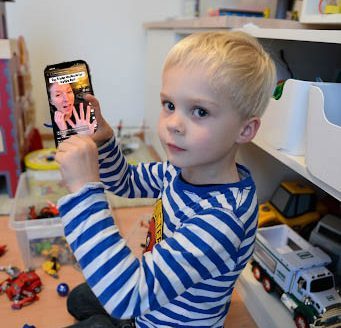Cattack
Fuzzy felines rampage over the Internet
Cat culture is growing. People are seemingly intoxicated with the fuzzy little felines and their antics. From memes dedicated to them, movies about them, and newspaper articles dedicated to their popularity, the cat is now the king. But why?
“They are just stupidly amusing,” sophomore Tanner Strobel said. “They can climb up walls, do back flips, and they can do pretty cool things with their meowing.”
Cats used to amuse humans dates back to the late nineteenth century when photographer Harry Pointer took black and white photos of clothed cats in various poses and then added jokes or other captions to the photos.
Then come the 1970s, the famous “Hang in there, baby” motivational poster, which featured a kitten hanging onto a tree branch, gained massive popularity. The Internet arrived in the ‘90s with the cat videos, posts, and pictures following shortly after.
Today, the most notorious cats are Grumpy Cat and Lil’ Bub. Both cats gained infamy through photos and YouTube videos of them with puns and jokes attached, such as the picture of Grumpy Cat with the word “No” below it.
The thing that distinguishes Grumpy Cat and Lil’ Bub from the normal house cat is the fact that both felines have disorders that affect their appearance. Lil’ Bub has many physical deformities ranging from extra toes and a missing jaw to feline dwarfism – a trait both she and Grumpy Cat share. These physical differences they share make them very well recognized.
“They are pretty much held up as idols,” junior Issac Sprang said. “ They are known for their facial features and expressions.”
Grumpy Cat, real name Tardar Sauce, has numerous amounts of merchandise on sale such as t-shirts, bumper stickers, and even her own line of coffee. Meanwhile, Lil’ Bub just released her first full length feature film, a documentary about her and other popular cats on the web entitled “Lil’ Bub and Friends, “ viewable on the YouTube channel, VICE.
Some ideas for cat popularity suggest that the clichéd “crazy cat people” cooped up in their homes have found their way onto Internet.
“It takes a special person to love and appreciate a cat,” cat-loving history teacher Craig Johnson said. “Those of us who are intelligent, like-minded people can truly appreciate the world of cats.”
Other theories on cat popularity suggest that cats exist on the web with no underlying reason to their popularity. They are just pets. Pets that some people find cute or funny, and that others may just see a scraps of fur. They were there from the beginning and are likely to stay for quite some time to come.
“[I think] it shows how what we as a society find funny changes over time,” Strobel said.
Whatever the reason for the origin, the cat craze is unmistakable. According to a study conducted by the cat food maker, Friskies, fifteen percent of all internet traffic is taken up by cat related searches and website hits.
Regardless of statistics, opinions and other thoughts on cats, it seems all of this is quite the catastrophe.
Your donation will support the student journalists of Hagerty High School. We are an ad-free publication, and your contribution helps us publish six issues of the BluePrint and cover our annual website hosting costs. Thank you so much!
Ben Sorkin is currently the head graphic designer and Graphics Editor for The BluePrint. Last year he was Graphics Editor and maintained student connections for a short period of time. Aside from the occasional story, Ben mostly works on design layouts for The BluePrint and Hagertyjourn. Three of Ben's design layouts were awarded with the title of "All Florida" during FSPA 2014, and Ben also took home the award for best website media coverage alongside Sophie Hill. Other than design, Ben also loves to write, and above all, adores cats.






